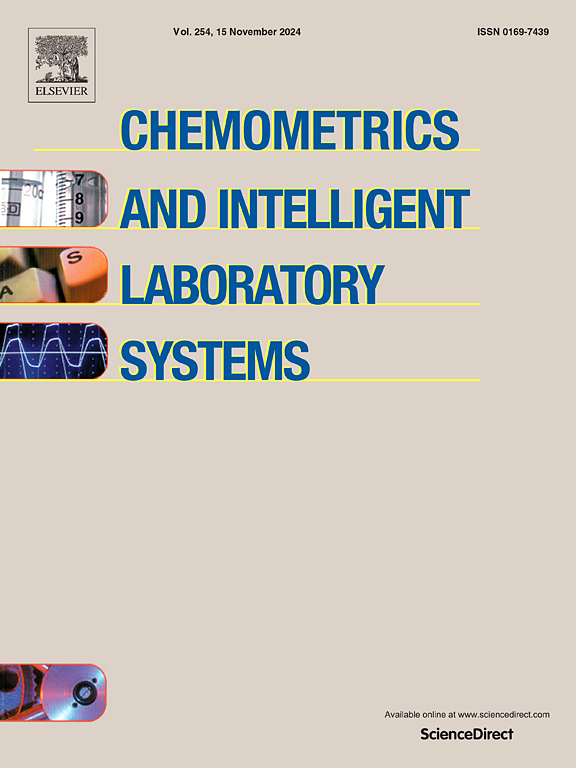An accurate prediction of drug–drug interactions and side effects by using integrated convolutional and BiLSTM networks
IF 3.7
2区 化学
Q2 AUTOMATION & CONTROL SYSTEMS
Chemometrics and Intelligent Laboratory Systems
Pub Date : 2024-12-15
DOI:10.1016/j.chemolab.2024.105304
引用次数: 0
Abstract
Multiple drugs have gained attention for the treatment of complex diseases. However, while numerous drugs offer benefits, they also cause undesirable side effects. Accurate prediction of drug–drug interactions is crucial in drug discovery and safety research. Therefore, an efficient and reliable computational method is necessary for predicting drug–drug interactions and their associated side effects. In this study, we introduce a computational method based on integrating convolutional and BiLSTM networks to predict the types of drug–drug interactions. The Morgan fingerprints approach was utilized to encode the drug’s SMILES, and the Tanimoto coefficient structural similarity profile-based approach was used to determine similarities. These encoded drugs were passed through convolutional and BiLSTM layers to extract important feature maps. The ReLU activation function and the dense layer were employed for feature dimensionality reduction. The last dense layer used the softmax function to classify the 86 types of drug–drug interactions. The proposed model achieved a performance of 95.38% accuracy and 98.78% AUC, respectively. The proposed model outperformed and surpassed all the existing state-of-the-art models.
使用集成卷积和BiLSTM网络准确预测药物-药物相互作用和副作用
多种药物治疗复杂疾病已引起人们的关注。然而,尽管许多药物提供了好处,但它们也会产生不良的副作用。药物相互作用的准确预测在药物发现和安全性研究中至关重要。因此,需要一种高效可靠的计算方法来预测药物-药物相互作用及其相关副作用。在这项研究中,我们引入了一种基于卷积和BiLSTM网络集成的计算方法来预测药物-药物相互作用的类型。采用摩根指纹法对药物的SMILES进行编码,并采用基于谷本系数结构相似谱的方法确定相似性。这些编码的药物通过卷积和BiLSTM层来提取重要的特征映射。采用ReLU激活函数和密集层进行特征降维。最后一个密集层使用softmax函数对86种药物-药物相互作用进行分类。该模型的准确率和AUC分别达到95.38%和98.78%。所提出的模型优于并超越了所有现有的最先进的模型。
本文章由计算机程序翻译,如有差异,请以英文原文为准。
求助全文
约1分钟内获得全文
求助全文
来源期刊
CiteScore
7.50
自引率
7.70%
发文量
169
审稿时长
3.4 months
期刊介绍:
Chemometrics and Intelligent Laboratory Systems publishes original research papers, short communications, reviews, tutorials and Original Software Publications reporting on development of novel statistical, mathematical, or computer techniques in Chemistry and related disciplines.
Chemometrics is the chemical discipline that uses mathematical and statistical methods to design or select optimal procedures and experiments, and to provide maximum chemical information by analysing chemical data.
The journal deals with the following topics:
1) Development of new statistical, mathematical and chemometrical methods for Chemistry and related fields (Environmental Chemistry, Biochemistry, Toxicology, System Biology, -Omics, etc.)
2) Novel applications of chemometrics to all branches of Chemistry and related fields (typical domains of interest are: process data analysis, experimental design, data mining, signal processing, supervised modelling, decision making, robust statistics, mixture analysis, multivariate calibration etc.) Routine applications of established chemometrical techniques will not be considered.
3) Development of new software that provides novel tools or truly advances the use of chemometrical methods.
4) Well characterized data sets to test performance for the new methods and software.
The journal complies with International Committee of Medical Journal Editors'' Uniform requirements for manuscripts.

 求助内容:
求助内容: 应助结果提醒方式:
应助结果提醒方式:


